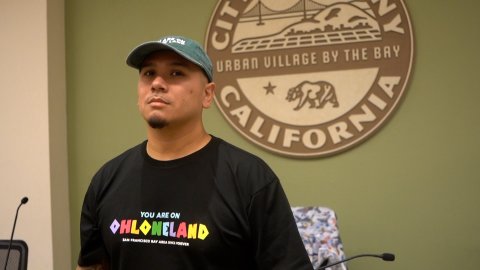
11 Feb Robin López: How Albany’s First Latino and Indigenous Mayor Is Shaping the Future of His City

Albany Mayor Robin López, who has roots in Richmond, San Pablo and his Mexican and Purepecha ancestry, is seen in City Council chambers. (Denis Perez-Bravo / The CC Pulse)
Interview, Denis Perez-Bravo
Albany Mayor Robin López credits his upbringing in Richmond and San Pablo for shaping his leadership today. His deep pride in his Mexican and Purepecha heritage also plays a key role in guiding his work and decisions.
As a father of two, López has learned to balance family life with his political career, especially during the early days of his son’s life. In addition to his role as mayor, he is a Ph.D. candidate in the Department of Environmental Science, Policy and Management at UC Berkeley. López graduated from De Anza High School in 2007 and went on to earn degrees from Contra Costa College, SF State, and San Jose State.
López made history in January when he became both Albany’s first Latino and first Indigenous mayor. He was elected to the Albany City Council in 2022, where members serve one-year terms as mayor and vice mayor, with López serving as vice mayor in 2023.
In his new role, he is focused on fostering community engagement, ensuring diversity in representation, and supporting local businesses. While Albany faces fiscal challenges, particularly with the closure of the Golden Gate Fields horse racing track, López is committed to transparency, public safety, and advocating for vulnerable communities, particularly undocumented residents.
This interview has been lightly edited.
CC Pulse: What do you think are the biggest challenges Albany is facing right now?
Robin López: One major concern is the city’s fiscal health, especially after the closure of Golden Gate Fields, which significantly contributed to the city’s budget. We recently made the tough decision to sunset the Financial Advisory Committee to create a new standing committee that will allow for better access to information and more transparency with the public about the city’s finances.
CC Pulse: What is the future of Golden Gate Fields?
RL: The future of Golden Gate Fields is uncertain. It’s under private ownership, and the owners can sell to various parties, including the state, the city, or another private group. The city is in communication with the owners and provides regular updates to the community. However, no serious movement has happened yet. A decade ago, the community voted on what activities could be allowed there, including recreational spaces and possibly a hotel, but not housing or industrial use. There’s also tension between the need for housing and preserving the area’s ecological richness.
CC Pulse: How do you feel about policing in Albany?
RL: While I acknowledge my own biases regarding policing, I’m generally satisfied with how Albany’s police conduct themselves. There aren’t widespread reports of issues like racial profiling, which is a positive change compared to the past. Historically, Albany had a reputation, especially among communities of color, for discriminatory policing, with stories of frequent traffic stops in the ’70s and ’80s. However, there’s been a noticeable shift in the culture of policing here, and compared to cities like Richmond, there’s less concern about people of color feeling unsafe just existing.
CC Pulse: What actions are you taking to improve public safety and prevent police misconduct?
RL: We are setting up a new Public Safety and Health Committee, which will have two council members working directly with the police and fire departments. We had a policing commission, but it couldn’t move things forward because volunteers didn’t have access to certain information. As an elected official, I do have access to that information, so I made the strategic decision to sunset the commission and handle accountability directly through the council.
I plan to use this position for better transparency and to ensure we’re making continual improvements. It’s also a chance to reaffirm Albany’s status as a sanctuary city, especially in light of the national climate where vulnerable communities, especially undocumented folks, are facing increasing stress and fear.
CC Pulse: What are some things you love about Albany and wouldn’t want to change?
RL: Albany has a strong sense of community and engagement, especially in terms of representation. When I was elected, both I and my colleague John Miki, an Asian American, were voted in, showing the city’s need for diverse representation. The business district is a highlight — it’s small, walkable and filled with unique mom-and-pop shops, many owned by people of color. I was surprised by the level of support these businesses receive from the city. It’s different from larger cities, where smaller businesses often struggle. I’d love to eventually open my own shop here. Albany is a place where people support each other and local businesses thrive. Additionally, our low crime rate and solid foot traffic make it an ideal location for entrepreneurs.
CC Pulse: How did your experiences growing up in the Bay Area influence who you are today? How have local movements, like the Hyphy movement and things like scraper bikes, shaped you?
RL: Growing up in the Bay Area in a very particular era, particularly in the East Bay, it definitely made me appreciate living today. Anyone who’s grown up in that area knows if you’re still alive, you’re damn near an OG. If you grew up in Richmond, San Pablo, or any of those areas, most definitely Oakland, the city—you know these hotspots in the Bay Area, like East Palo Alto, Vallejo… I’m starting to name off all the cities, but if you grew up in any of these spots where things were popping off, you know what I’m talking about.
CC Pulse: You mentioned the impact of those formative years in shaping who you are today. How does that relate to your role as mayor now?
RL: All those experiences contribute to who I am today, especially growing up in a place where you had to navigate a lot. The culture that comes with that, like the Hyphy movement, scraper bikes, it was all so influential. All these things made me who I am, and they definitely gave me a perspective on resilience and pride in where I come from.
CC Pulse: Two years ago, you entered politics. How did you manage balancing your responsibilities as a politician while raising your son?
RL: When I was campaigning, my partner was pregnant with him, and then she got hurt. She had fallen down the stairs and fractured her leg in three places. Three weeks later, he came. They couldn’t sedate her to do the surgery. She had to stay awake. All they could do was local nerve blockers. There were chances she wouldn’t survive, he wouldn’t survive. She did her surgery and three weeks later, in the cast and all, gave birth. That happened late September and in November, I was elected.
I couldn’t even soak in that I got a council seat or that I became the first Latino-Indigenous person elected to the City Council. It was like, my son has arrived. The universe had voted for him.
CC Pulse: Knowing from the beginning that you would eventually become mayor, how did you prepare for the role during the two years leading up to it?
RL: I prepared professionally and politically for this role. It definitely took a lot of mentorship from the two previous mayors who were actively on council. Learning from what they built off of because we, I think more or less, share a similar political ideology.
You go by what you see. You try to emulate that or you try to perfect it to be better. I’ve seen what other people have done on council, and I was like, OK, what can I do? What can I change? I learned about the craft of writing memos to council to propose changes in policy. Learned how to present my point in an effective manner where it doesn’t come off as too abrasive. That was something I had to learn a little bit about, because I’m so used to just being me all the time. I don’t need a code-switch, but I do need to understand what my delivery looks like so people understand the point I’m trying to bring.
CC Pulse: As someone with a strong connection to your Mexican and Purepechan roots, how do you feel about the term “Hispanic,” and how do you personally identify?
RL: I don’t subscribe to the identification of Hispanic. There’s a lot interconnected with that. It’s very problematic. But I do identify as a Latino, Indigenous, mixed Indigenous.
>>>Commentary: Why I Am Letting Go of ‘Latino’ as Part of My Self-Identification<<<
CC Pulse: What does it mean to you to recognize and connect with your Indigenous roots?
RL: We’ve got greatness embedded in our DNA. Everyone should be proud of where they’re rooted from.
CC Pulse: Can you share a little about your family’s background and where they come from?
RL: Many of them are from Michoacán, [Mexico], but they have also held territory where my family’s from in Guanajuato.
CC Pulse: In your opinion, what needs to be done to better support Indigenous communities?
RL: What would it look like to have a Mayan cultural center? We have Latino cultural centers. There’s other cultural centers for specific ethnicities or national identities, but where is it for folks who come from this Indigenous experience? Where do they fit in? Where do they get their translators? Where do they get their resources? Where do they get their healthcare? Where do they get their advocacy? Those are things I started recognizing in my early 20s around how people are severely mistreated.
CC Pulse: What message would you like to share with the community about cultural pride and identity?
RL: Once you start that journey, you can be proud of where you come from, and that pride becomes a powerful force for positive change.


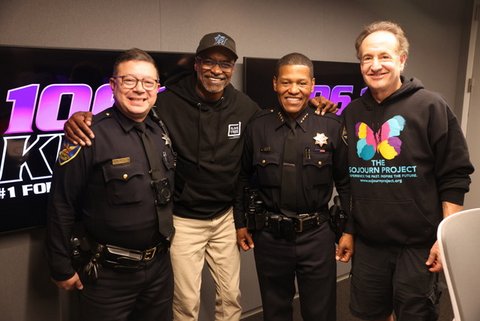
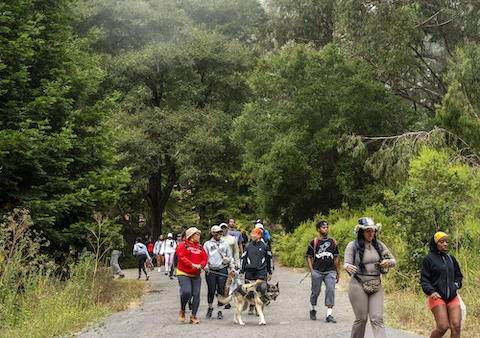
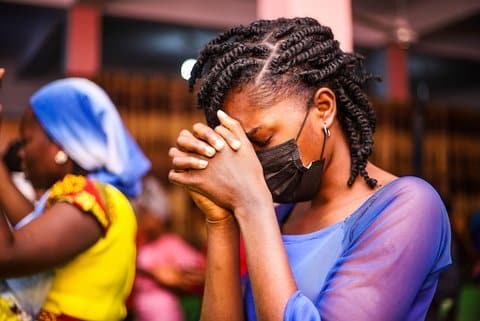
No Comments